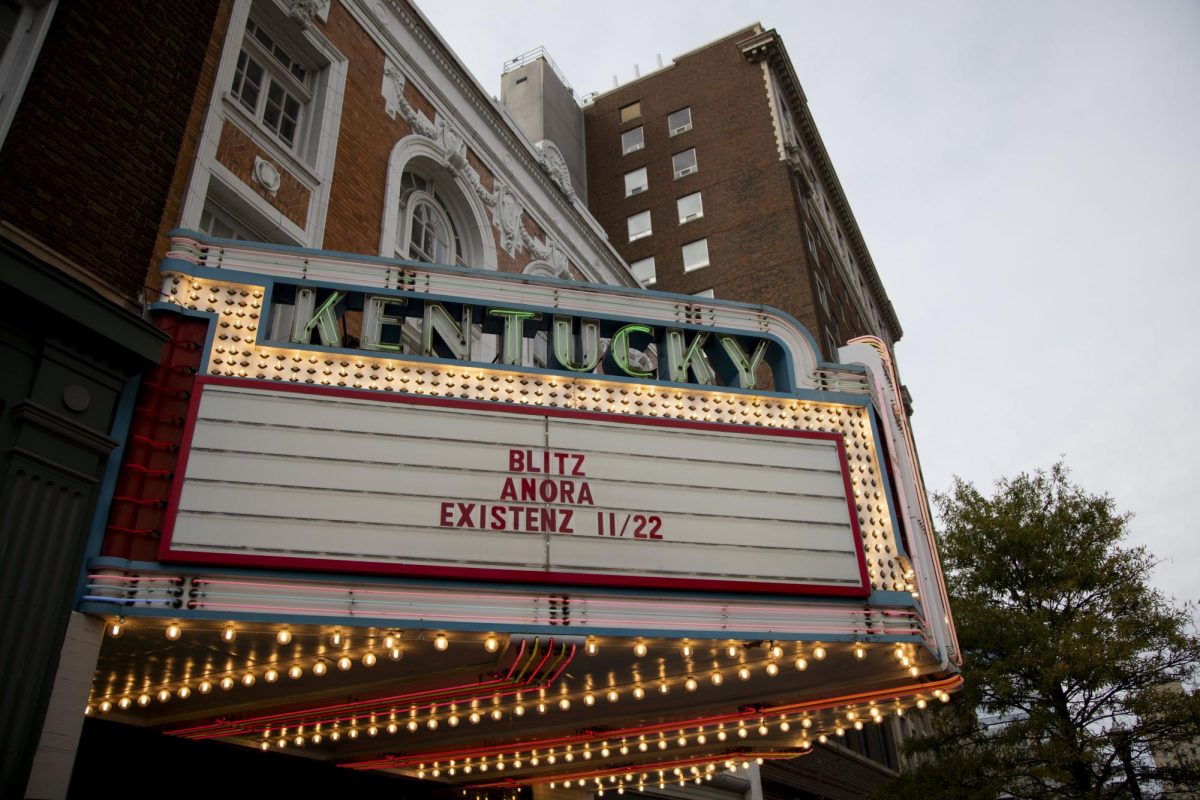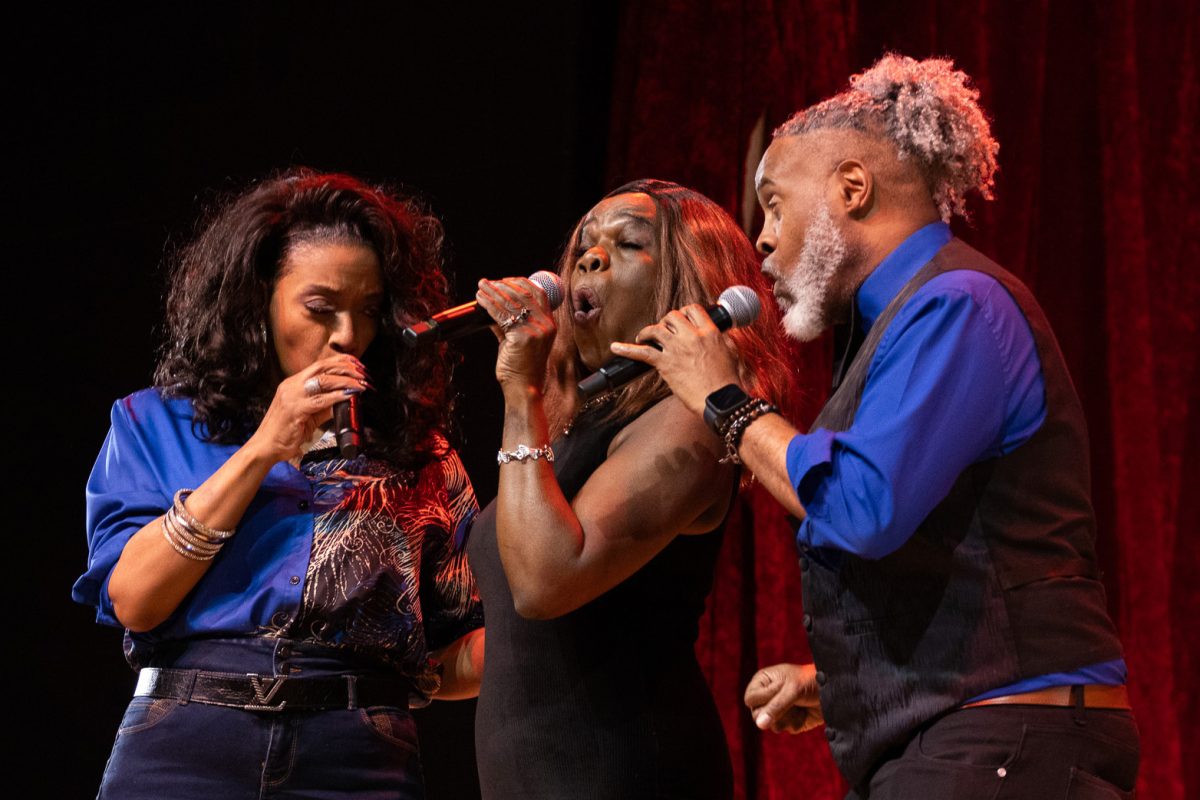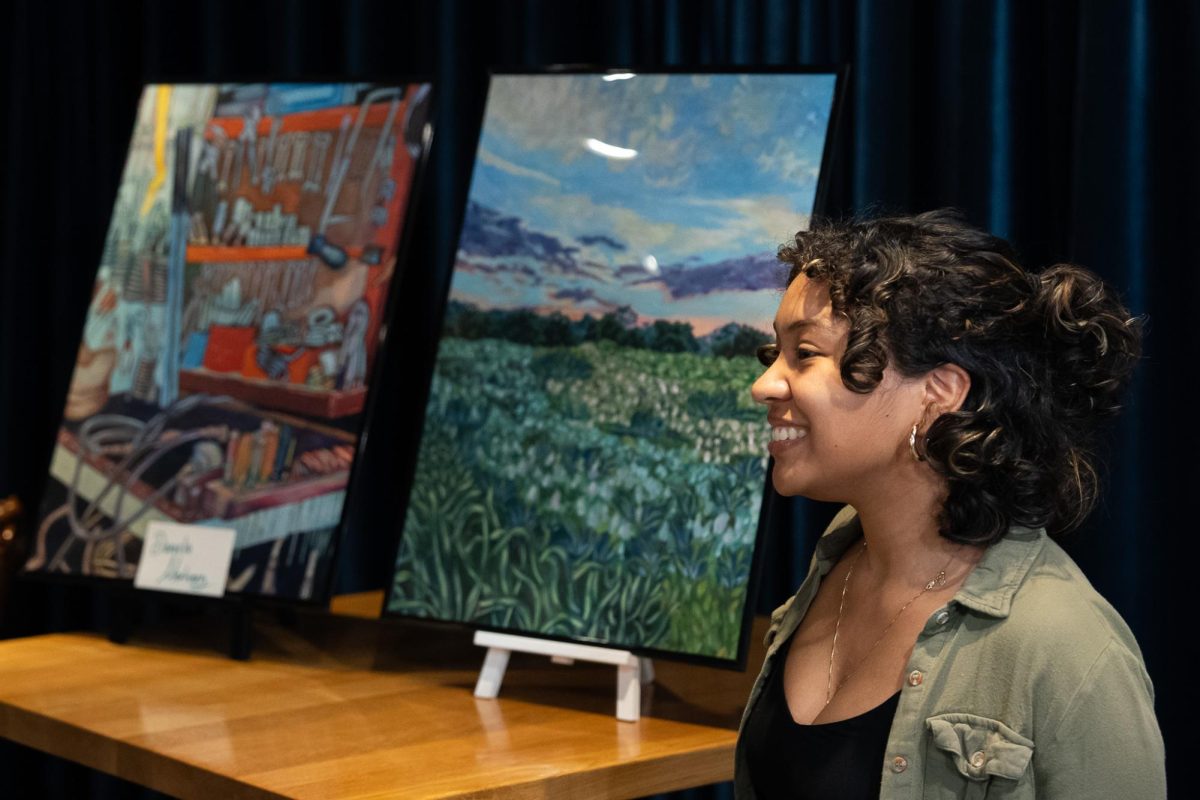In downtown Lexington on East Main Street is the Kentucky Theatre. A non-profit-owned arthouse movie theater, and one of the only remaining movie palaces (smaller theaters built in the 1920s and ‘30s) in the state.
Past the lighted marquee above the entrance is an elaborately decorated room painted white and gold. Chandeliers hang from the ceiling and cutouts of characters from classic films line the mirrors at the sides of the room.
In the center, a child’s red tricycle and a typewriter atop a desk are arranged to evoke the 1980 horror movie “The Shining,” a movie the theater showed for the lead-up to Halloween.
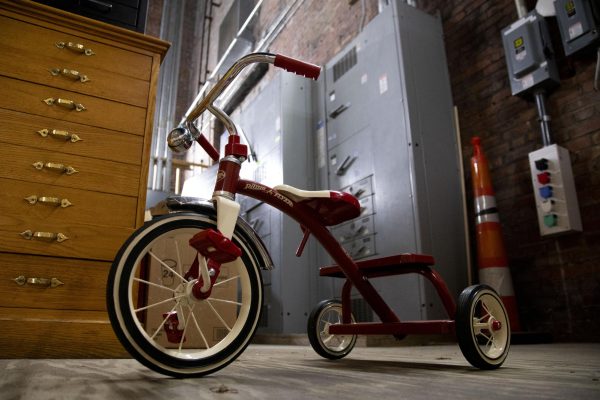
Further back into the building, there is a concession stand then a hallway leading to the theater’s two viewing rooms, where people fill the seats just as they did when the theater first opened in 1922, over a century ago.
The Kentucky Theatre’s 102 years of existence was not one of smooth sailing. In fact, until recently, the theater had been in a state of recovery, and it had faced the threat of closure multiple times before that as well.
Fred Mills, general manager of the theater, has worked there for 55 years and grew up alongside its high and low points. He said he had gone to the movies there since he was young and remembered seeing the classic Disney movies for the first time with his friend.
“My family didn’t have lots of money to go and do anything,” Mills said.
He said his frequenting of the theater was because his friend’s father was the assistant manager at the time. In 1963, when Mills was 17, he was offered a summer job at the theater at which he continued to work after graduation and while he attended college at Eastern Kentucky University.
Mills said he was studying to be a teacher at the time, and every Friday would take the Greyhound bus from Richmond to Lexington to go and work at the theater.
When he finished college in 1970, Mills said the market for teachers was already saturated and he was unable to find work in teaching.
“So, I thought ‘well, maybe I should think about doing something else,’ and there was a management position open at the Kentucky Theatre,” Mills said. “I’ve been here pretty much the rest of my life.”
The theater in the ‘70s was not owned by a non-profit but by a small company which Mills was a part of. The non-profit that now runs the theater, Friends of the Kentucky Theatre, is also home to its director, Hayward Wilkirson.
“I’ve always loved the Kentucky. To me, it’s one of the single greatest things about Lexington,” Wilkirson said.
Wilkirson also grew up frequenting the Kentucky Theatre. He said at the time it was the only place that showed the indie, foreign and documentary films that he enjoyed watching.
“The theater has been through many crises,” Wilkirson said, starting with a fire that broke out in a restaurant next door to the theater in 1987.
Mills said that while the theater itself had not burned, the smoke had damaged the entire building.
“Everything in here was black, from the front doors to the rear of the building,” Mills said.
The damage was so extensive that the company that owned the theater could not afford to restore it, and the building was closed for five years.
“I can remember Lexington after the fire. Five years, there was no Kentucky Theatre… if you went to a video store, you might have quite literally one shelf that had unusual films or foreign films or documentaries; there was just nothing to watch,” Wilkirson said. “It felt like for five years, there was nothing to do.”
Although the theater did not show a single movie for five years, Mills said community support for the theater was incredibly strong.
At the time, Scott Baesler was the mayor of Lexington. Mills said it was thanks to him and the insistence of the community that city hall was convinced to buy the land and buildings that held the theater and to sell bonds so that the building could be restored.
“He realized how much the theater meant to Lexingtonians, to central Kentuckians,” Mills said. “He said many times he had gotten more telephone calls, more letters, more visits at city hall than anything since he had been in office.”
The renovations and restoration of the building was successful, and the Kentucky Theatre reopened in 1992. It was in 2012 that the Friends of the Kentucky Theatre surfaced as a non-profit.
Wilkirson said it existed only to raise money and support the theater. He recalled it playing a major role in helping the theater out of its next hurdle, changes in technology.
In order to keep up with other theaters and have access to more movies, the theater was to switch from 35mm to digital projection, at the time a major and expensive shift in how the theater operated.
Wilkirson said the non-profit, along with previous mayor from 2011-2019, Jim Gray, helped raise almost one million dollars to help the theater shift to digital, along with other renovations to the building.
It was shortly after that, about seven to eight years ago, that Wilkirson and his friend Lisa Meek, who is now chair at the non-profit, joined the Friends of the Kentucky Theatre.
In October 2020, the theater closed once more due to the COVID-19 virus, and Mills said business was essentially halted.
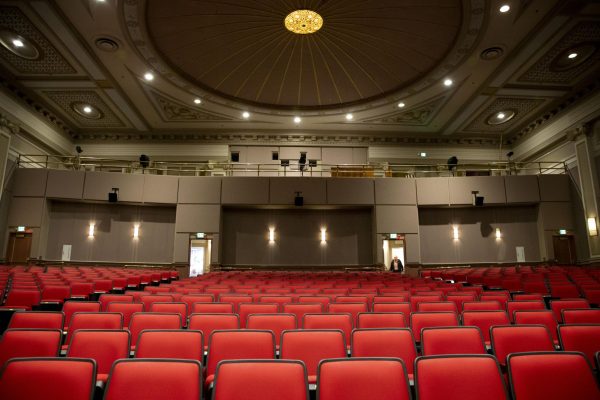
“There was very little you could do but hope and pray that people would come to the movies, but folks were scared, and they weren’t going out,” Mills said. “Plus, they weren’t making movies.”
The company that owned the theater had been paying to keep it alive throughout each of its crises. By the time businesses were ready to open again, Mills said the company decided to step away from running the theater.
Wilkirson said he and Meek felt a duty to help the theater.
“Even then, we were starting to think about the future of the theater,” Wilkirson said.
He and the rest of the non-profit had thought of a transition plan for the theater, and it was then that they suggested the non-profit take over and run it in the company’s place.
“I think it didn’t even occur to them to be a non-profit; there’s a lot of work involved in getting that status,” Wilkirson said. “Once we reopened, it was obvious that at least one of us needed to leave their regular daytime job and come here and work.”
Before becoming director, Wilkirson was a book designer at the University of Kentucky Press. He left the position for the theater and has been there ever since.
Mills said when it was time to reopen, the people at the non-profit asked him to remain at the theater as manager, which he was glad to accept.
Since then, the theater has been recovering from the effects of the pandemic.
“It took a while for folks to come back after COVID,” Mills said. “I see a lot of familiar faces … (but) a lot of people passed away, I don’t see them anymore.”
As the theater regained its audience, Wilkirson said he and the Friends of the Kentucky Theatre had done a lot of research to see how other non-profit theaters were run. They even toured other arthouse theaters and attended a conference for them.
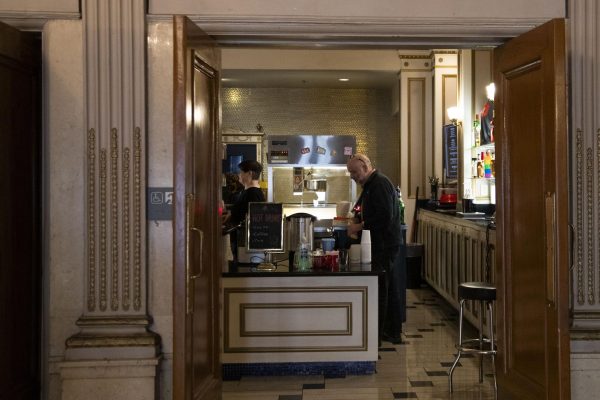
Wilkirson said he has been focusing on marketing for the theater. He runs its website and social media, and tries to advertise its events to reach the people of Lexington. He said he wanted to advertise in a way that feels authentic.
“There’s a vibe to this theater, we’re not a corporation, we’re not Starbucks friendly, we’re genuinely friendly,” Wilkirson said.
Along with marketing is deciding what gets shown in the theater to begin with, which Wilkirson said is another challenge.
The theater still has 35mm projectors from when it had not yet shifted to digital, Wilkirson said he would like to see them put to use but is unsure of how the theater could go about it in an effective way.
“It’s a much more involved process to shoot 35mm,” Wilkirson said. “We ponder doing it occasionally, I just don’t know if we’re in a big enough market, a big enough city to support it. You need a large enough crowd of really, really die-hard cinephiles willing to pay to watch films on 35mm.”
As for showing both old and new movies, Wilkirson said working with the rules of movie distributors complicates what can and cannot be shown.
Wilkirson said oftentimes when a new movie comes out, distributors say it should be released “clean,” meaning it is shown at every available showtime on a theater’s screen. Other movies cannot be shown instead.
“It’d be almost impossible with a single screen,” Wilkirson said. “Squeezing that repertory film in is a nightmare every single week, and it’s a guessing game.”
The theater shows both new and repertory films, or films that are past their initial theatrical run. Because the building only has two screens, it can significantly limit what all can be shown.
Wilkirson said that despite the day-to-day challenges they face, the Kentucky Theatre’s audience has been very encouraging.
“It’s a pretty eclectic bunch of people that come to the theater,” Wilkirson said. “We don’t show every first-run commercial film, but we try to cater to different folks.”
According to Wilkirson, screening classic films and having director retrospectives, where multiple films from one director are shown over the course of a few days, have been received favorably.
Along with the repertory films are entire series the theater holds every year, like its Summer Classics series, its Twelve Lions Film Festival and its annual screening of “The Rocky Horror Picture Show” have drawn in more new people.
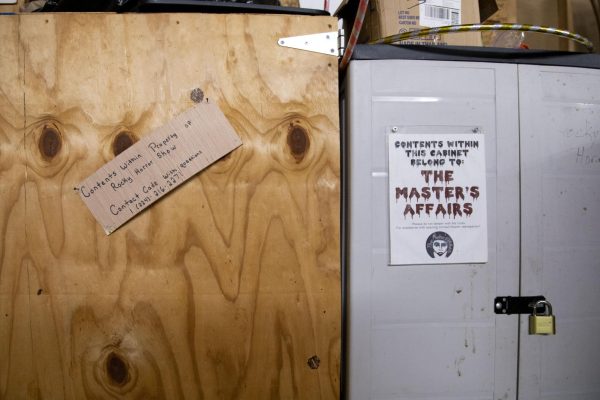
Moving forward, Wilkirson said he wants to ensure that the theater will succeed in the future after he and others at the non-profit are no longer running it.
“This is a really important institution to Lexington and we don’t want it to fail,” Wilkirson said. “For me, you’re preserving a cultural institution, a beautiful piece of architecture and then you’re just conserving this kind of beloved institution that for so many people feels like a second home.”
Wilkirson said he wants to make the theater an environment where people feel like they can be themselves in an otherwise more conservative state.
Mills wants to continue to welcome new people to the theater. He said that there are still many people living in Lexington that have never heard of the theater, and because of that he calls it “the best kept secret in Lexington.”
“They’re like my family, all these folks that come here over the years,” Mills said. “These people that have come here before I ever worked here and their children come here, and their children come here.”
Mills said he wants the theater to continue running forever. Throughout his life working for the theater, he said he was once told he must know everyone in town.
“Well, I know lots of folks’ first names, I know their last names, I might even know where they work, what kind of car they drive,” Mills said. “I’ve got the best job in town, I’ve always felt that way.”
Wilkirson said the theater is extremely lucky that the people and city of Lexington have supported it time and time again.
He said he thinks the preservation of the Kentucky Theatre is important as an architectural and cultural institution.
“They’re rare and they’re becoming rarer,” Wilkirson said. “Our single overarching goal is that Lisa (Meek) and I create an institution that survives our involvement with it.”






























































































































































